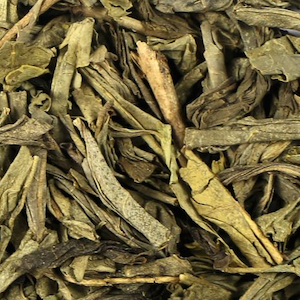Chinese Tea
Tea originated in China. Its past stretches back over 5,000 years. It evolved into an infusion that brings joy to both casual drinkers and connoisseurs. Our collection pays tribute to this tradition. It presents a wide selection of Chinese teas.
Delve into our range, where each tea is sealed fresh to ensure the finest taste and aroma with every sip. More than a mere beverage, Chinese tea is woven into the fabric of culture and lifestyle.
It was historically used for its therapeutic properties. People also used it to show reverence and thanks. It was even used as currency. It stands as a testament to China’s rich heritage.
Showing 1–12 of 182 results
-
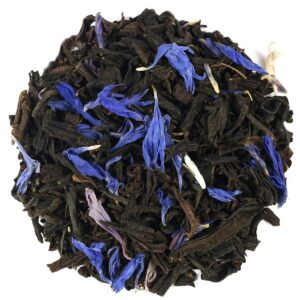
Arctic Fire Tea
From £2.44— or subscribe and save 10%Select options This product has multiple variants. The options may be chosen on the product page -

Celestial Jasmine Tea
From £3.81— or subscribe and save 10%Select options This product has multiple variants. The options may be chosen on the product page -
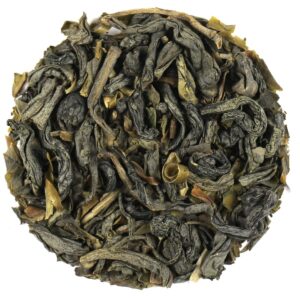
Chun Mee Green Tea
From £2.57— or subscribe and save 10%Select options This product has multiple variants. The options may be chosen on the product page -
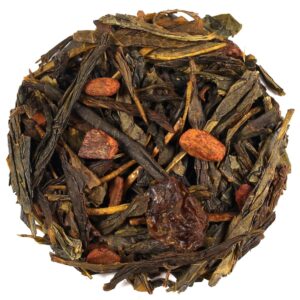
Cinnamon and Plum Green Tea
From £3.98— or subscribe and save 10%Select options This product has multiple variants. The options may be chosen on the product page -
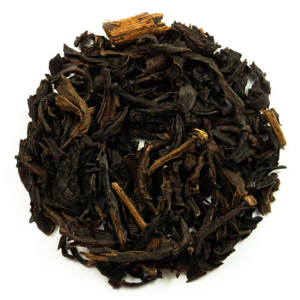
Formosa Oolong Poppy Tea
From £2.96— or subscribe and save 10%Select options This product has multiple variants. The options may be chosen on the product page -
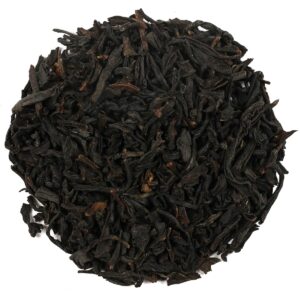
Organic Keemun Tea
From £2.84— or subscribe and save 10%Select options This product has multiple variants. The options may be chosen on the product page -
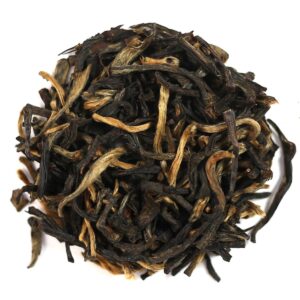
Organic Yunnan Black Tea
From £3.93— or subscribe and save 10%Select options This product has multiple variants. The options may be chosen on the product page -

Yunnan Green Tea
From £2.68— or subscribe and save 10%Select options This product has multiple variants. The options may be chosen on the product page -
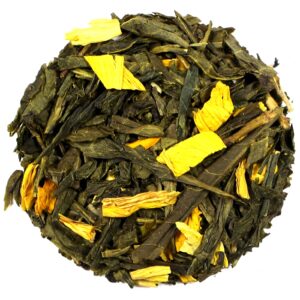
Peach Green Tea
From £2.73— or subscribe and save 10%Select options This product has multiple variants. The options may be chosen on the product page -

Jasmine Jade Ring Green Tea
From £16.49— or subscribe and save 10%Select options This product has multiple variants. The options may be chosen on the product page -
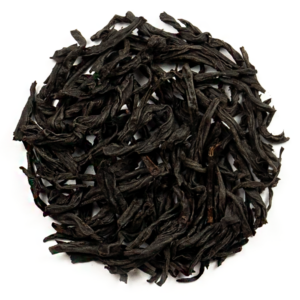
Formosa Ruby Black Oolong Tea
From £9.20— or subscribe and save 10%Select options This product has multiple variants. The options may be chosen on the product page -
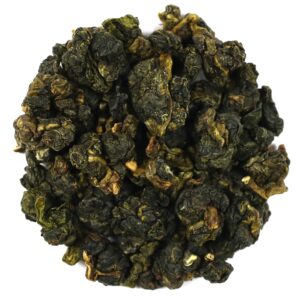
Formosa Oolong Dung Ting Tea
From £7.36— or subscribe and save 10%Select options This product has multiple variants. The options may be chosen on the product page
History of Tea in China
The journey of tea in China is an epic tale steeped in legend and woven through the fabric of dynastic changes. Legend says it was in 2737 BC when Emperor Shen Nong accidentally discovered tea. It happened when leaves from a wild tree blew into his pot of boiling water.
Over the next centuries, tea changed from a medicine to a drink for everyone. During the Tang Dynasty (618-907 AD), it became popular. Lu Yu penned a definitive guide called “The Classic of Tea.” It detailed refined tea cultivation and preparation.
As the years progressed, so did the art of tea drinking. During the Song Dynasty (960-1279), tea culture blossomed. Tea houses were introduced, and tea preparation was elevated to an art. The Ming Dynasty (1368-1644) saw the shift from powdered tea to loose leaf tea. This led to the rise of new types and an even richer tea culture.
European traders reached China in the 16th century. They introduced Chinese tea to the West. It became a sought-after item, causing a surge in trade. In the modern era, China continues to innovate in the tea industry. It produces a vast spectrum of tea types, including Green and Black teas, as well as Oolong, White, and Pu erh. Each type has its own processing method and flavor profile.
Today, Chinese tea is still culturally significant. It symbolises harmony, respect, and tranquillity. It is also a global phenomenon enjoyed by millions.
Chinese Tea Ceremony Explained
The Chinese tea ceremony is called ‘Gongfu Cha‘. It is a traditional ritual. It is steeped in the philosophies of Confucianism, Taoism, and Buddhism. It embodies the ideas of harmony, respect, purity, and tranquillity. The history of the tea ceremony is as rich as the history of tea itself. It traces back to the Song Dynasty. There, it started as art and spiritual practice.
The ceremony is done with great care and precision. It focuses on the methodical process of brewing tea. Participants often use Yixing teapots. They are made from special clay that absorbs the flavour of the tea. This enhances the taste with each use.
The process has several steps. First, warm the teapot and cups. Then, measure tea leaves, monitor water temperature, and pour water over the leaves in a ritual.
The tea is served in small cups, and each infusion is savoured for its unique flavour profile. People drink tea together during the ceremony. It serves as a bridge to connect with others. It fosters dialogue and shows mutual respect and gratitude.
The ceremony has many purposes. It shows hospitality and meditative. It appreciates the beauty and subtlety of tea. The tea isn’t the focus. Instead, the shared ritual creates unity and mindfulness.
It’s seen at formal ceremonies and informal gatherings of friends. It upholds its cultural significance. It remains a cherished tradition in China and worldwide.
Most Popular Types of Chinese Tea
Top Chinese Teas
- Green Tea: Famous for its delicate flavor and many health benefits. Tea enthusiasts prize Chinese green teas. For example, they love ‘Longjing’ or Dragon Well Tea for their freshness. They have a sweet, mellow taste.
- Oolong Tea: Occupies the middle ground between green and black teas. Chinese Oolong has many famous varieties. These include ‘Monkey Picked Oolong Tea‘ and ‘Da Hong Pao‘. They are known for their complex flavors and fragrant finishes.
- Black Tea: In China, it’s called ‘hong cha’ (red tea). Teas like ‘Keemun‘ and ‘Lapsang Souchong Tea Bags‘ have rich, malty flavors. They have gained global fame for their depth.
- White Tea: Revered for its subtlety and natural sweetness. White teas, such as ‘White Peony Tea‘, are minimally processed, offering a lighter, delicate experience.
- Pu erh Tea: This fermented tea is unique to China’s Yunnan province. It comes in two types – raw (‘Sheng’) and ripened (‘Shou’). It’s valued for its earthy taste and purported medicinal properties.
- Yellow Tea: A rarer tea with a unique processing method that imparts a smooth, mild flavour. Examples include ‘Huo Shan Huang Ya Yellow Tea‘ and ‘Huoshan Huangya’.
- Herbal Tea: Not technically tea, as it does not come from the Camellia sinensis plant. Chinese herbal teas are made with various flowers, fruits, and herbs. Popular examples include ‘Chrysanthemum Tea‘, ‘Goji Berry’, and ‘Hawthorn’.
There is a vast selection of teas to choose from. There is something for every palate and occasion. This makes Chinese tea a beloved drink worldwide. So next time you enjoy a cup of Chinese tea, take a moment to appreciate its deep history and cultural importance.

 Loose Leaf Tea
Loose Leaf Tea Pyramids
Pyramids Tea Bags
Tea Bags Africa
Africa Assam
Assam Ceylon
Ceylon Chinese
Chinese Darjeeling
Darjeeling European
European Indian
Indian Japan
Japan Nepal
Nepal South East Asia
South East Asia Ayurveda Tea
Ayurveda Tea Black Tea
Black Tea Chai Tea
Chai Tea Flowering Tea
Flowering Tea Fruit Tisanes
Fruit Tisanes Green Tea
Green Tea Herbal Tea
Herbal Tea Matcha Tea
Matcha Tea Oolong Tea
Oolong Tea Organic Tea
Organic Tea Pu erh Tea
Pu erh Tea Rooibos Tea
Rooibos Tea White Tea
White Tea Asian Coffee
Asian Coffee Caribbean Coffee
Caribbean Coffee Central American Coffee
Central American Coffee South American Coffee
South American Coffee Coffee Blends
Coffee Blends Decaffeinated Coffee
Decaffeinated Coffee Espresso Coffee
Espresso Coffee Ethically Sourced Coffee
Ethically Sourced Coffee Flavoured Coffee
Flavoured Coffee Organic Coffee
Organic Coffee Single Origin Coffee
Single Origin Coffee Chocolate 1
Chocolate 1 Chocolate 2
Chocolate 2 Chocolate 3
Chocolate 3 Chocolate 4
Chocolate 4 Chocolate 5
Chocolate 5 Chocolate 6
Chocolate 6 Chocolate 7
Chocolate 7 Chocolate 8
Chocolate 8 Chocolate 9
Chocolate 9 Loose Tea Filters
Loose Tea Filters Tea Accessories
Tea Accessories Tea Bricks
Tea Bricks Tea Caddies
Tea Caddies Tea Caddy Spoons
Tea Caddy Spoons Tea Gift Ideas
Tea Gift Ideas Tea Infusers
Tea Infusers Tea Strainers
Tea Strainers